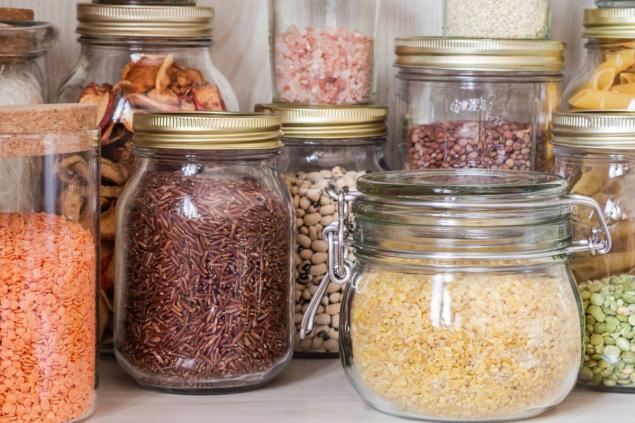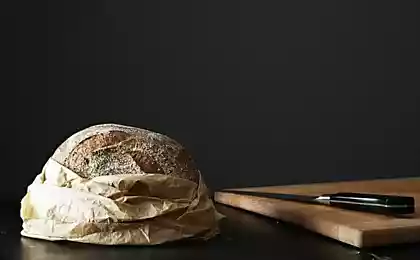178
The mother-in-law comes to us and starts putting all the cereals in the fridge, says they should be stored only like this.
With the onset of the pandemic, many housewives rushed to fill their closets with canned food and cereals. At the same time, buckwheat was especially actively bought up. It is believed that it can lie longer than others. How much buckwheat is actually stored and what effect does location and temperature have on the safety of cereals? We'll work it out together.

The shelf life of buckwheat is determined by GOST R 55290-2012. According to the document adopted in 2014, each manufacturer sets the shelf life of cereals depending on the quality of raw materials, processing technology used for storing containers.
620468
But in any case, this period should not exceed 20 months for the nucleus and 14-18 months for the passage (split into several parts of the nucleus). When choosing buckwheat for long-term storage, pay attention to the packaging date and shelf life. An important role is also played by humidity, which should not exceed 13%. Otherwise, the product is intended only for “fast” use.
Some cereals, such as oatmeal, have a high fat content. Over time, upon contact with air, it begins to oxidize and the cereal becomes bitter. Violation of production technology and storage rules leads to the appearance of mold and pests in the cereal.

And even if the processor carefully monitors the process of making cereals, it is enough to skip one invisible egg so that the bugs begin to multiply in the package. If the source of this scourge is not identified in time, uninvited guests can fill the entire kitchen, encroaching on other food products.

Often the finished product contains a lot of garbage. Flower shells, husks, parts of stems and leaves, seeds of weed plants only worsen the taste of porridge. But, for example, metal-magnetic impurities can adversely affect the health of consumers.
Store cereals is recommended in sealed plastic bottles or cans. So they will be reliably protected from food moths and other insects. But only if they are not infected with pest eggs at the production stage.

One of the surest ways of prevention is to place the cereal before storage in a properly heated oven. The high temperature will not only destroy adult beetles, but also kill the larvae that are just about to be born.

The opposite method of heating is to place the cereal in the refrigerator. According to the rules, it should be stored at a temperature of 5 to 10 degrees. And if the temperature is higher, the sleeping larvae wake up and begin active reproduction. In any case, the cereal should be in closed jars so as not to absorb the moisture and smell of other products from the refrigerator.
Finally,
To summarize, it is better to keep cereals intended for long-term storage in a sealed container, with a humidity of no more than 60%, in a cool and closed place from sunlight. For the longest time, rice and buckwheat retain their properties in such conditions. The worst stored oatmeal, millet and corn cereals.

The shelf life of buckwheat is determined by GOST R 55290-2012. According to the document adopted in 2014, each manufacturer sets the shelf life of cereals depending on the quality of raw materials, processing technology used for storing containers.
620468
But in any case, this period should not exceed 20 months for the nucleus and 14-18 months for the passage (split into several parts of the nucleus). When choosing buckwheat for long-term storage, pay attention to the packaging date and shelf life. An important role is also played by humidity, which should not exceed 13%. Otherwise, the product is intended only for “fast” use.
Some cereals, such as oatmeal, have a high fat content. Over time, upon contact with air, it begins to oxidize and the cereal becomes bitter. Violation of production technology and storage rules leads to the appearance of mold and pests in the cereal.

And even if the processor carefully monitors the process of making cereals, it is enough to skip one invisible egg so that the bugs begin to multiply in the package. If the source of this scourge is not identified in time, uninvited guests can fill the entire kitchen, encroaching on other food products.

Often the finished product contains a lot of garbage. Flower shells, husks, parts of stems and leaves, seeds of weed plants only worsen the taste of porridge. But, for example, metal-magnetic impurities can adversely affect the health of consumers.
Store cereals is recommended in sealed plastic bottles or cans. So they will be reliably protected from food moths and other insects. But only if they are not infected with pest eggs at the production stage.

One of the surest ways of prevention is to place the cereal before storage in a properly heated oven. The high temperature will not only destroy adult beetles, but also kill the larvae that are just about to be born.

The opposite method of heating is to place the cereal in the refrigerator. According to the rules, it should be stored at a temperature of 5 to 10 degrees. And if the temperature is higher, the sleeping larvae wake up and begin active reproduction. In any case, the cereal should be in closed jars so as not to absorb the moisture and smell of other products from the refrigerator.
Finally,

To summarize, it is better to keep cereals intended for long-term storage in a sealed container, with a humidity of no more than 60%, in a cool and closed place from sunlight. For the longest time, rice and buckwheat retain their properties in such conditions. The worst stored oatmeal, millet and corn cereals.
What can not be done on the day of January 25, Tatiana to the year was prosperous
The husband decided to indicate his wife her place in the house, but she lost consciousness from fatigue, what happened brought the man to his senses.























